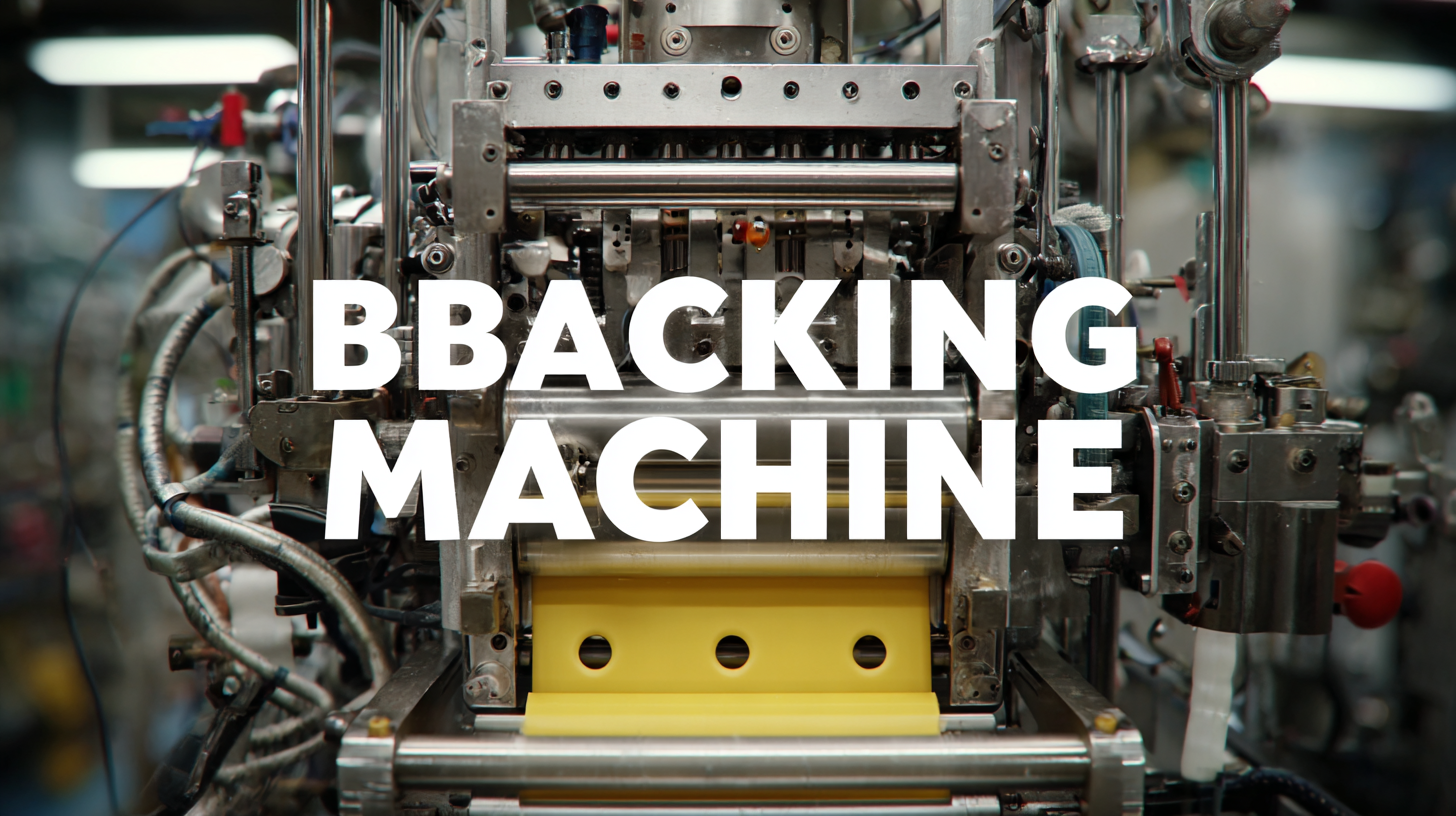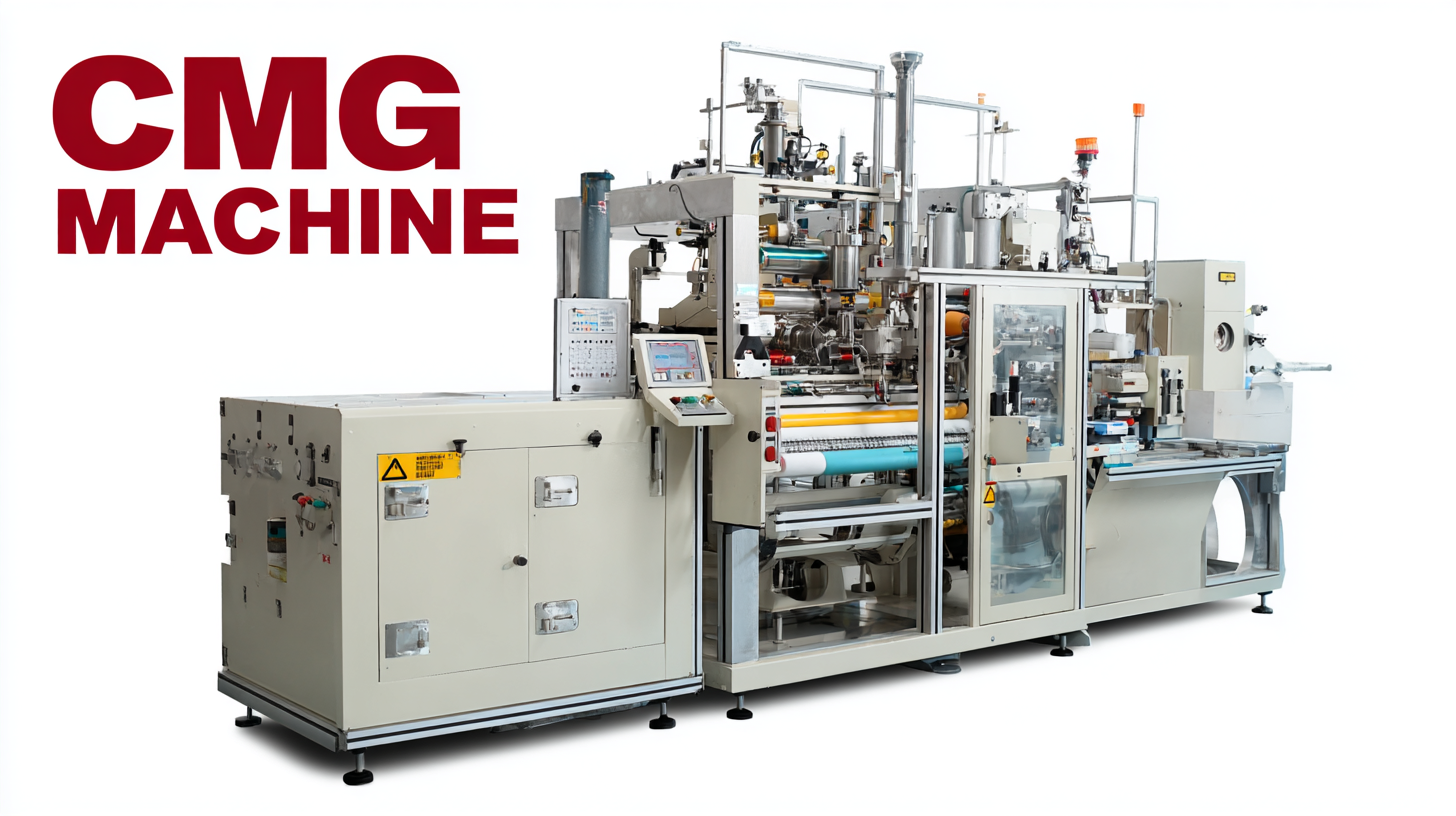
Revolutionizing Bag Production The Ultimate Guide to Best Bag Making Machine Trends for 2025
As the global demand for bags continues to surge, reaching an estimated market value of over $50 billion by 2025, the importance of innovative manufacturing solutions cannot be overstated. This evolution is primarily driven by advancements in technology, particularly in the realm of Bag Making Machines, which play a crucial role in enhancing production efficiency and quality. According to industry reports, the adoption of automated bag making solutions can increase output by up to 30%, while also minimizing material waste.

With the ongoing push towards sustainability and eco-friendly materials, the best bag making machines are now being designed not only to meet production demands but also to adhere to environmental standards. As we explore the latest trends and innovations in this sector, it becomes clear that precision engineering and advanced automation in bag production are key to transforming China's manufacturing landscape and serving the needs of a dynamic global marketplace.
Top Innovations in Bag Making Machines to Watch in 2025
As we move towards 2025, the bag-making industry is on the brink of significant transformation, driven by cutting-edge innovations in technology. Manufacturers are increasingly adopting automated bag-making machines equipped with artificial intelligence, enabling precise cutting, stitching, and fabric handling. This automation not only enhances production efficiency but also minimizes waste, setting new standards for sustainability in the industry.

Additionally, the incorporation of advanced materials is paving the way for more durable and eco-friendly bags. Innovations like biodegradable fabrics and recycled materials are becoming commonplace, reflecting a growing consumer demand for sustainable products. These advancements play a crucial role in shaping the future of bag production, as brands prioritize both functionality and environmental impact.
With these emerging trends, the bag-making landscape is poised for a remarkable shift, promising exciting opportunities for manufacturers and consumers alike in the coming years.
Key Features That Define the Best Bag Production Equipment
When considering the key features that define the best bag production equipment for 2025, automation stands out as a significant trend. Advanced bag making machines are increasingly equipped with smart technology that allows for real-time monitoring and adjustments. This innovation not only enhances precision in the manufacturing process but also significantly reduces waste, leading to a more sustainable production method. Machine learning algorithms can be integrated to optimize settings for different materials and designs, ensuring a versatile performance that meets diverse market demands.

Another critical feature is the adaptability of bag production machines. Manufacturers are seeking equipment that can quickly switch between various bag types, including reusable, biodegradable, and custom designs. This flexibility caters to the evolving consumer preferences for sustainable solutions. Additionally, enhanced user interfaces with touch-screen controls and programmable settings make these machines easier to operate and maintain. As manufacturers look to stay competitive, investing in versatile and user-friendly equipment will be vital for meeting production targets and adhering to sustainability goals in the upcoming years.
Sustainability Trends Influencing Bag Manufacturing Technology
As we look ahead to 2025, sustainability trends are playing a pivotal role in shaping the future of bag manufacturing technology. With the increasing awareness of environmental issues, manufacturers are more committed than ever to adopting practices that minimize waste and reduce their carbon footprint. Innovations in materials, such as biodegradable fabrics and recycled components, are becoming standard in the production of bags. This shift not only aligns with consumer demands for eco-friendly products but also supports manufacturers in meeting stricter regulations aimed at promoting sustainable practices.
Moreover, advancements in bag-making machines are facilitating these sustainability efforts. Technologies that allow for precision cutting and efficient use of materials are helping reduce scrap waste during production. Automated processes powered by artificial intelligence are optimizing production lines, ensuring that every resource is utilized efficiently. As we embrace these changes, the integration of sustainable practices within bag manufacturing will not only revolutionize the industry but also play a crucial role in our collective effort to protect the planet.
Revolutionizing Bag Production: The Ultimate Guide to Best Bag Making Machine Trends for 2025
| Trend | Description | Impact on Sustainability | Predicted Adoption Rate (%) |
|---|---|---|---|
| Eco-Friendly Materials | Use of biodegradable and recycled materials in bag making. | Significantly reduces plastic waste and carbon footprint. | 75% |
| Automation in Production | Integration of AI and robotics in bag manufacturing processes. | Minimizes waste and enhances efficiency, lowering resource consumption. | 65% |
| Smart Technology | Incorporation of IoT sensors for monitoring fabric quality. | Improves product quality and reduces defective rates, promoting resource efficiency. | 55% |
| Sustainable Supply Chains | Emphasis on local sourcing and ethical labor practices. | Reinforces community well-being and reduces transportation emissions. | 70% |
| Customizable Manufacturing | Flexible systems allowing for personalized designs. | Reduces overproduction by aligning with consumer demand. | 50% |
Automation vs. Manual Processes: What's Best for Bag Makers?
In the ever-evolving landscape of bag production, manufacturers are increasingly faced with the decision of whether to adopt automation or stick to manual processes. Automation offers a distinct advantage in terms of efficiency and error reduction, which is crucial in high-stakes industries like pharmaceuticals and food production. Recent advancements highlight this shift; for instance, automated systems have significantly decreased human error in drug substance filling, where more than half of manufacturers still rely on manual labor. By transitioning to automated solutions, companies can streamline operations and enhance quality control, ultimately leading to improved productivity.
Furthermore, the pet food sector has seen a surge in automation adoption, driven by rising consumer demands for quality and nutrition. As the global pet food market expands, incorporating automated technologies can help manufacturers keep pace with this growth while maintaining consistency and compliance with health standards. A notable statistic indicates that automation in manufacturing can lead to a 20-30% increase in operational efficiency, making it a pivotal consideration for bag makers evaluating their production approaches for 2025.
Ultimately, the choice between automation and manual processes hinges on a thorough assessment of each manufacturer's unique requirements and market pressures. As trends in bag making continue to evolve, the commitment to integrating advanced technologies will shape the future of production methodologies, ensuring that businesses remain competitive in an increasingly automated world.
Bag Making Machine Trends for 2025
This chart illustrates the key metrics relevant to bag making machine trends for 2025. It compares automation efficiency and manual craftsmanship alongside other critical factors such as cost of production, production speed, and market demand, providing insights for bag makers in choosing their production approach.
Leading Brands Dominating the Bag Making Machine Market in 2025
In 2025, the bag making machine market is set to experience unprecedented growth, driven by technological advancements and evolving consumer preferences. According to a recent report from Market Research Future, the global bag making machine market is projected to reach a valuation of $1.2 billion by 2025, with a compounded annual growth rate (CAGR) of 7.5% during the forecast period. Leading brands like Hohenstein Group and Biesse S.p.A. are at the forefront, offering innovative solutions that streamline production and enhance efficiency. Their cutting-edge technology not only improves the speed of production but also reduces material waste, catering to the rising demand for sustainability in manufacturing.
Additionally, automation is becoming a key trend among top players in the industry. Companies such as HSM GmbH and Karl Marbach GmbH are integrating smart technologies and IoT capabilities into their bag making machines. This integration allows for real-time monitoring and predictive maintenance, significantly minimizing downtime. A study by ResearchAndMarkets highlights that automated machines are expected to account for over 40% of market sales by 2025, reshaping the landscape of bag production and setting new standards for quality and efficiency. These leading brands are not just reacting to market changes but are actively shaping the future of bag manufacturing through their commitment to innovation and sustainability.